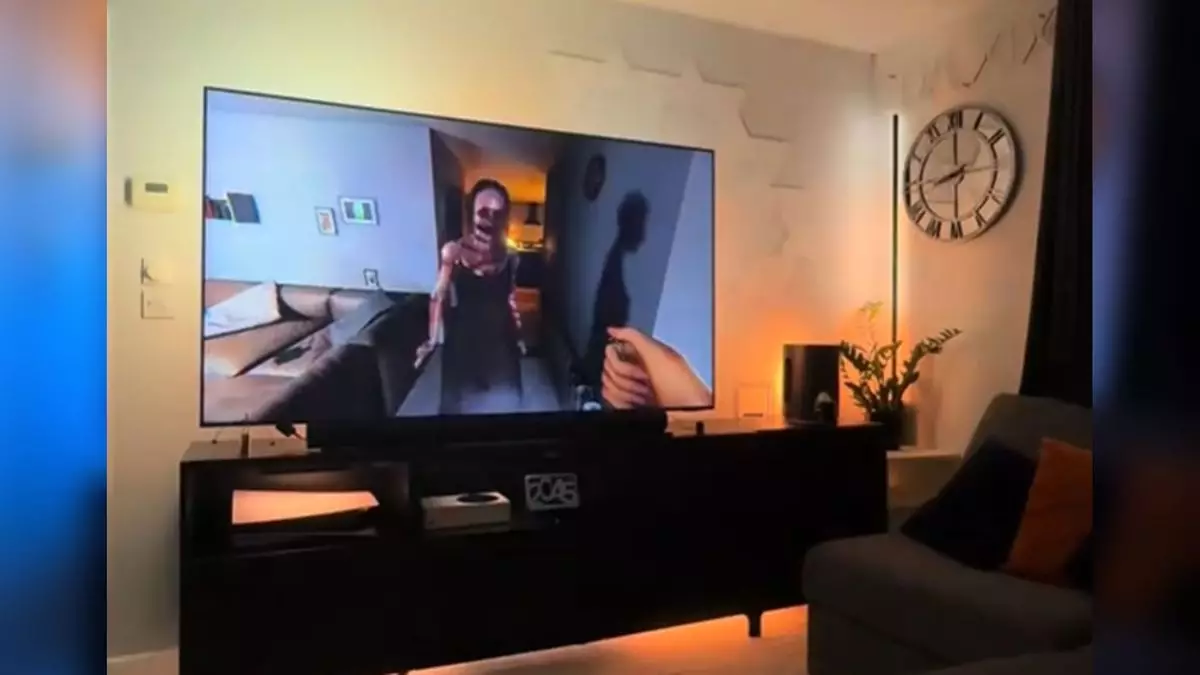As technology advances at breakneck speed, the gaming industry constantly finds innovative ways to enhance player experiences. Today, we see the rise of immersive setups that include virtual reality headsets, haptic feedback devices, and synchronized lighting systems. Among those dabbling in this ecstasy of sensory overload is TikTok user Idaxix, who has ingeniously transformed their gaming environment into a psychological rollercoaster. But while enhancing immersion in video games is an enticing prospect, one must question where the line is drawn between excitement and sheer terror.
Idaxix’s method of crafting an immersive experience involves coupling psychological horror games like *Phasmophobia* with an extensive array of LEDs, smart bulbs, and RGB light strips. While the setup boasts aesthetic appeal, it raises an interesting point: how far can we push the boundaries of immersion before it becomes an uncomfortable, if not horrifying, experience? Flashing lights that signal ghostly presences can amplify the anxiety and fear already inherent in horror games, turning an exhilarating gaming session into a genuine nightmare.
At the heart of immersive gaming lies the principle of engaging players on multiple sensory levels. The allure of matching vibrant lighting to on-screen happenings creates a multisensory experience that can captivate the senses. Activities like navigating brightly colored tracks in *Mario Kart* under a rainbow explosion of synchronized lights can elicit childlike wonder and excitement. However, when the game turns sinister—as it often does in horror genres—the very same technology can transform meditation into a panic attack.
As someone who enjoys horror films and the occasional jump scare, I empathize with Idaxix’s courage in embracing the full experience. Still, I must admit that the specter of horror intensified by rhythmic flashes of light might be pushing it too far for casual gamers. The haunted ambiance generated through advanced lighting can increase tension, making games like *Phasmophobia* not merely unsettling but profoundly distressing.
Following my recent encounter with haptic technology at a Razer demonstration, I find myself pondering the potential of innovative setups like Idaxix’s. Surrounded by vibrating pads and audio experiences that amplify even the slightest in-game rumble, the thought of integrating such setups into horror gaming captivated my imagination. After all, who wouldn’t want to feel a gust of wind while navigating a ghost-infested house? Unfortunately, this idea also takes on a concerning undercurrent: Would a slight draft behind your neck enhance the experience, or simply lead to certain panic-induced consequences, including a sudden realization that you’ve just soiled your gaming chair?
While these innovations may feel like they push gaming into new frontiers, it’s essential to balance the pursuit of immersion with what developers call ‘player comfort.’ Would it be feasible to incorporate features that allow players to control the intensity of their experience? Perhaps a dial for adjusting the level of fright could become an indispensable gaming accessory.
Idaxix deserves recognition for their creativity, technical skills, and adventurous spirit; they are daring to explore the extreme ends of gaming experiences. However, their exploits also serve as a cautionary tale about technological advancement in gaming. The blend of horror and immersive technology can easily tip over from delightful to dreadful.
As gaming platforms continue to develop and launch new technologies, players must navigate this spectrum of excitement and anxiety. Whether you are a thrill-seeker fully embracing the fear or someone who prefers a more subdued experience, the fascinating evolution of gaming technology is bound to provoke reflection on just how we engage with the digital worlds we craft.
Be it LEDs blinking in time with ghostly events or LED-lit Mario Kart races, the immersive experience promises an exhilarating ride—albeit with a potential for heart-thumping trepidation. Whether through joy or sheer fright, the evolution of modern gaming offers up a wealth of memories waiting to be made. Approach with caution, but do dive in!

